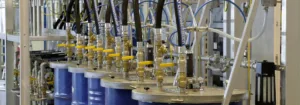This is a comprehensive guide on how to select the right air hose for your application. Here are the key points to consider: How to Choose the Right Air Hose for Your Air Motor.
Hose Length
The length of the hose is determined by the distance between the compressor system and the location of the air tool, as well as the amount of movement necessary. A longer hose may produce a pressure decrease, thus it is critical to select the proper length..
Hose Size
Hose size relates to the inner diameter (ID) of the hose, which defines the amount of air it can transport. The most often used sizes are 1/4 inch, 5/16 inch, 3/8 inch, and 1/2 inch. The minimum hose size required is generally specified by the air tool manufacturer.
Maximum Working Pressure
The hose’s maximum operating pressure should be equal to or greater than the air supply’s maximum pressure. The burst pressure, or the maximum pressure before the hose ruptures, may also be listed in the hose specification.
Type of Hose
Hoses are classified as either standard or coiled. Coiled hoses are more suited for situations where space is limited, whilst conventional hoses are better suited for individuals who like the hose to rest flat. The hose’s material will influence its flexibility, weight, lifetime, and performance.
Specific Hose Types
Polyurethane (PU) hoses from PCL are appropriate for applications requiring a narrower bend radius and offer great resistance to abrasion from gasoline, lubricants, and abrasion. Nylon hoses are more resistant to heat and chemicals, and they can withstand a high working pressure, making them perfect for high-pressure applications. TPE/PVC hoses are lightweight and appropriate for indoor and outdoor applications, whereas SuperFlex hoses are exceptionally flexible and durable.
By considering these parameters into account, you can choose the best air hose for your application, ensuring consistent air pressure and optimum performance.


